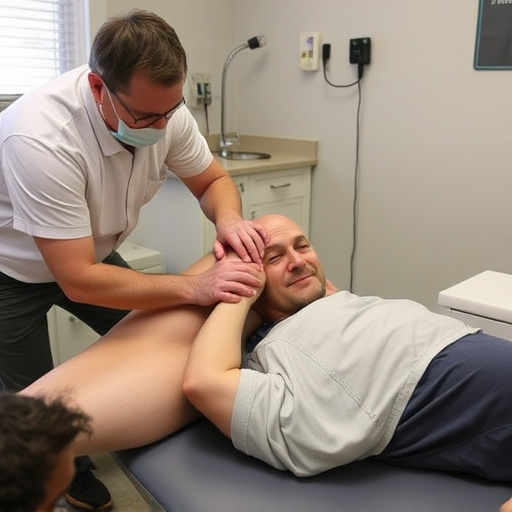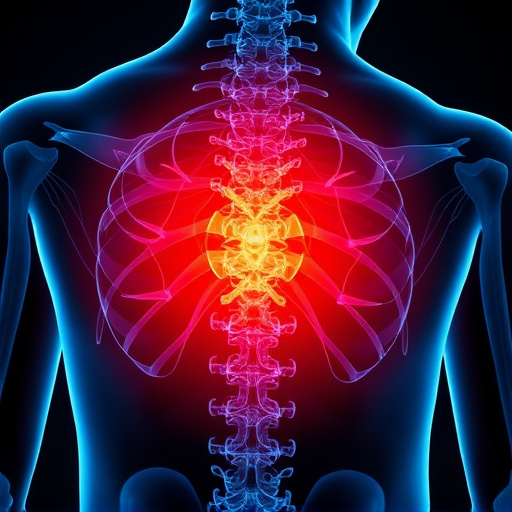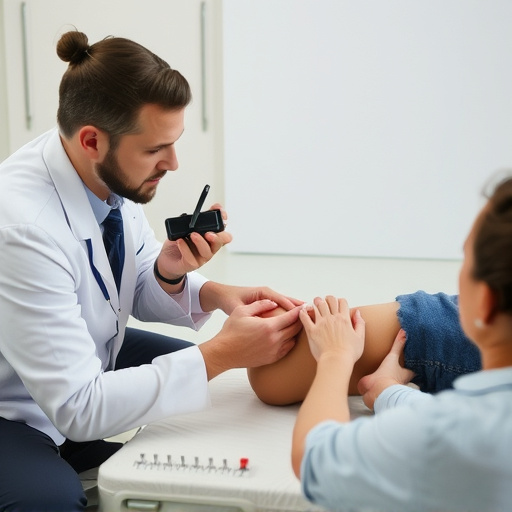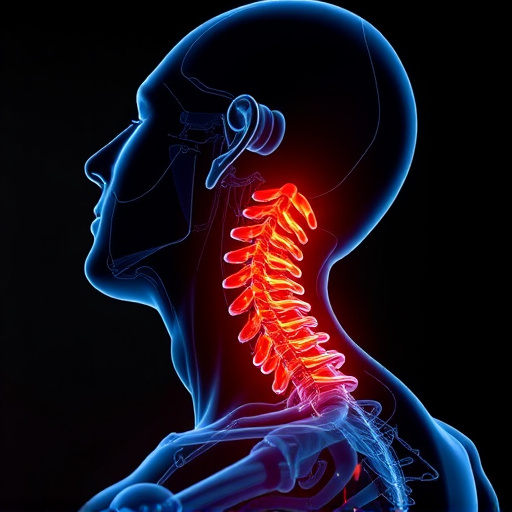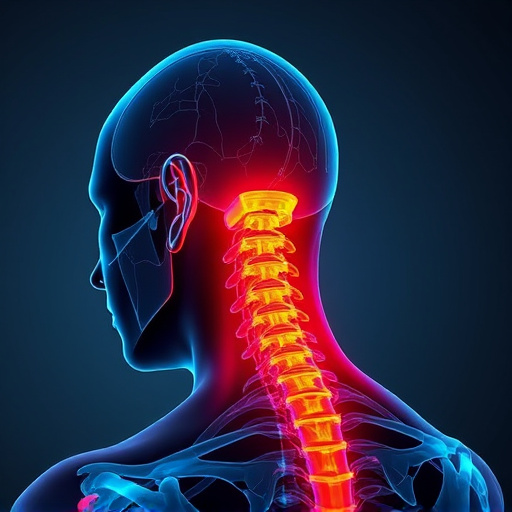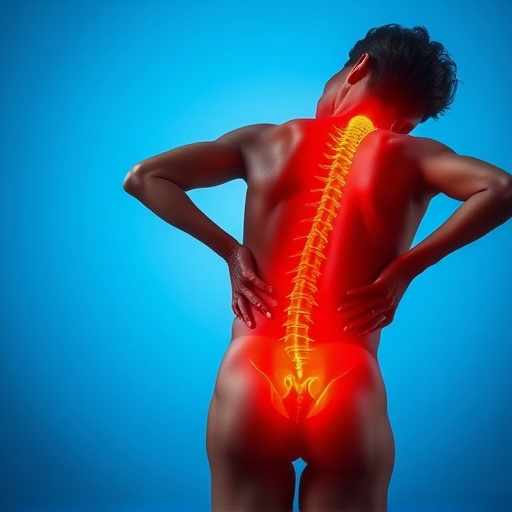Sports injuries affecting muscles, ligaments, and tendons due to sudden movements or impacts can range from sprains (overstretched/torn ligaments), strains (muscle/tendon damage), to tears (partial/complete rupture). Prompt and effective sports injury treatment involves RICE (rest, ice, compression, elevation), physical therapy, chiropractic care, and surgery for severe cases. Immediate care includes assessing the injury, providing basic first aid, and seeking professional advice. Advanced treatments like chiropractic manipulation and rehabilitation ensure safe return to sports while long-term strategies focus on prevention through exercise programs, education, and proper equipment use.
Sports injuries are common among athletes, with sprains, strains, and tears being frequent occurrences. This comprehensive guide delves into effective sports injury treatment for these damaging conditions, offering insights on immediate care, advanced healing techniques, and long-term management strategies. Understanding the unique definitions and causes of sprains, strains, and tears is crucial for athletes aiming to expedite recovery and return to their favorite games safely.
- Understanding Sprains, Strains, and Tears: Definitions and Causes
- Immediate Care and First Steps for Effective Sports Injury Treatment
- Advanced Healing Techniques and Long-Term Management Strategies
Understanding Sprains, Strains, and Tears: Definitions and Causes

Sprains, strains, and tears are common sports injuries that affect the soft tissues of the body, including muscles, ligaments, and tendons. These injuries occur due to sudden movements, excessive stretching, or traumatic impacts during physical activities. A sprain happens when a ligament is overstretched or torn, while a strain refers to the damage caused to a muscle or tendon. Tears, more severe, involve partial or complete rupture of these structures.
Proper understanding of these conditions is crucial for effective sports injury treatment. Treatment options often include rest, ice, compression, and elevation (RICE), along with physical therapy and chiropractic care for sciatica relief in some cases. In severe instances, surgical intervention might be required. Prompt attention to these injuries can aid in reducing pain, promoting healing, and preventing long-term complications, ensuring athletes can safely return to their sports.
Immediate Care and First Steps for Effective Sports Injury Treatment
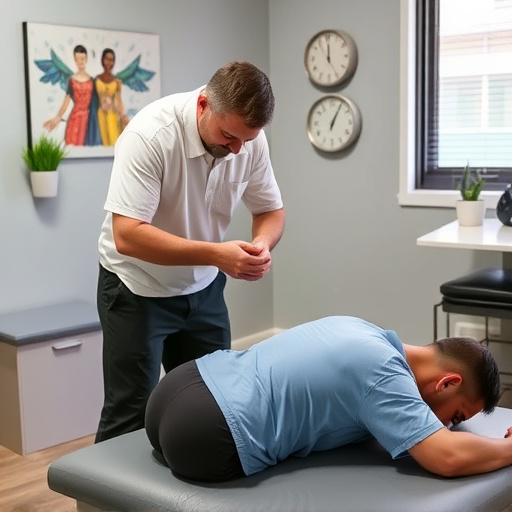
When faced with a sports injury such as a sprain, strain, or tear, immediate and proper care is paramount for effective sports injury treatment. The first steps involve assessing the severity of the injury and providing basic first aid. This includes resting the affected area to prevent further damage, applying ice to reduce swelling and pain, and compressing the injury with a bandage to stabilize it. Elevating the injured body part above the heart can also help minimize swelling. These initial actions are crucial in managing inflammation and ensuring a smoother recovery process.
Following these immediate care steps is crucial for setting the foundation of your sports injury treatment plan. It’s important to see a healthcare professional as soon as possible, especially if the pain is severe or you suspect a more serious tear. They can provide a thorough diagnosis, rule out any hidden fractures or damage, and recommend appropriate non-invasive treatment methods like physical therapy or ultrasound. For more complex cases, functional rehabilitation techniques may be employed to restore strength, flexibility, and range of motion, ultimately paving the way for a safe return to sports participation.
Advanced Healing Techniques and Long-Term Management Strategies

In the realm of sports injury treatment, advanced healing techniques have emerged to offer more effective solutions for sprains, strains, and tears. Beyond conventional methods, innovative approaches such as chiropractic treatment and spinal adjustments play a pivotal role in not only alleviating symptoms but also addressing underlying structural issues. Chiropractic care, for instance, focuses on manipulating the spine to reduce inflammation, restore mobility, and promote natural healing processes. This non-invasive approach has gained popularity among athletes due to its ability to provide headache relief and enhance overall performance.
Long-term management strategies are equally crucial in sports injury treatment. These include personalized exercise programs designed to strengthen supporting muscles, improve flexibility, and prevent future injuries. Physical therapy, with a focus on specific stretching and strengthening exercises, is an integral part of these regimens. Additionally, educating athletes about proper warm-up techniques, equipment use, and body positioning can significantly reduce the risk of sprains, strains, and tears, ensuring they can continue to participate in their preferred sports safely and effectively.
In conclusion, effective sports injury treatment for sprains, strains, and tears involves a combination of immediate care, advanced healing techniques, and long-term management strategies. By understanding the specific conditions and their causes, athletes can take proactive steps to prevent and manage these injuries. From RICE (Rest, Ice, Compression, Elevation) protocol to more specialized treatments like physical therapy and platelet-rich plasma (PRP), there are various options available to promote healing and restore function. Implementing these strategies not only accelerates recovery but also helps athletes return to their sport at peak performance levels.



